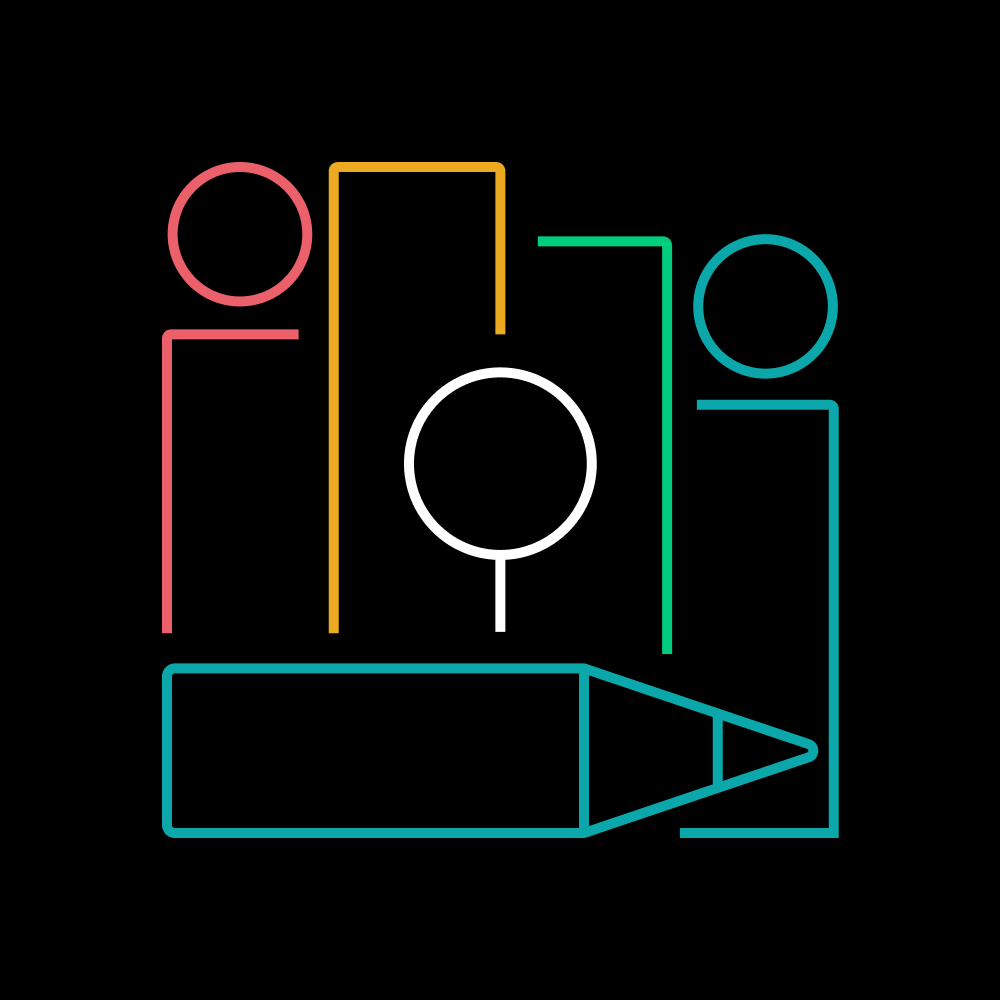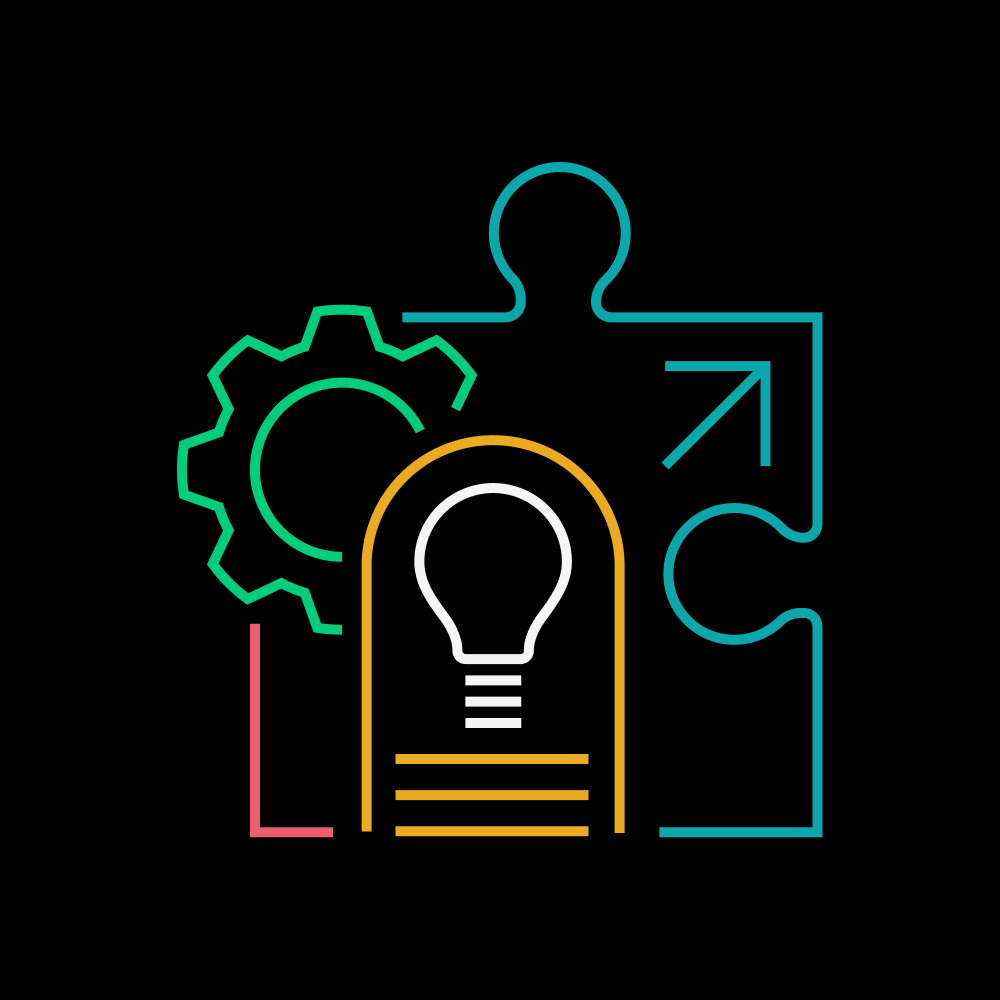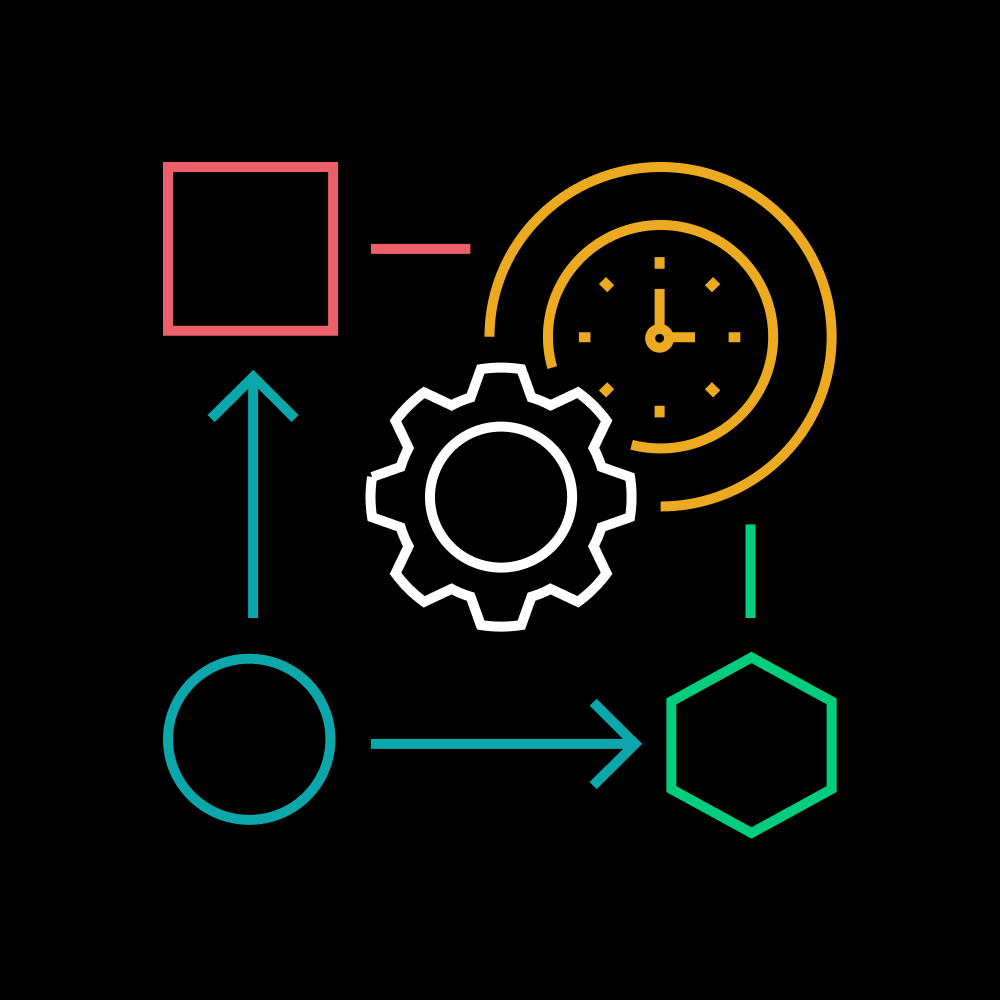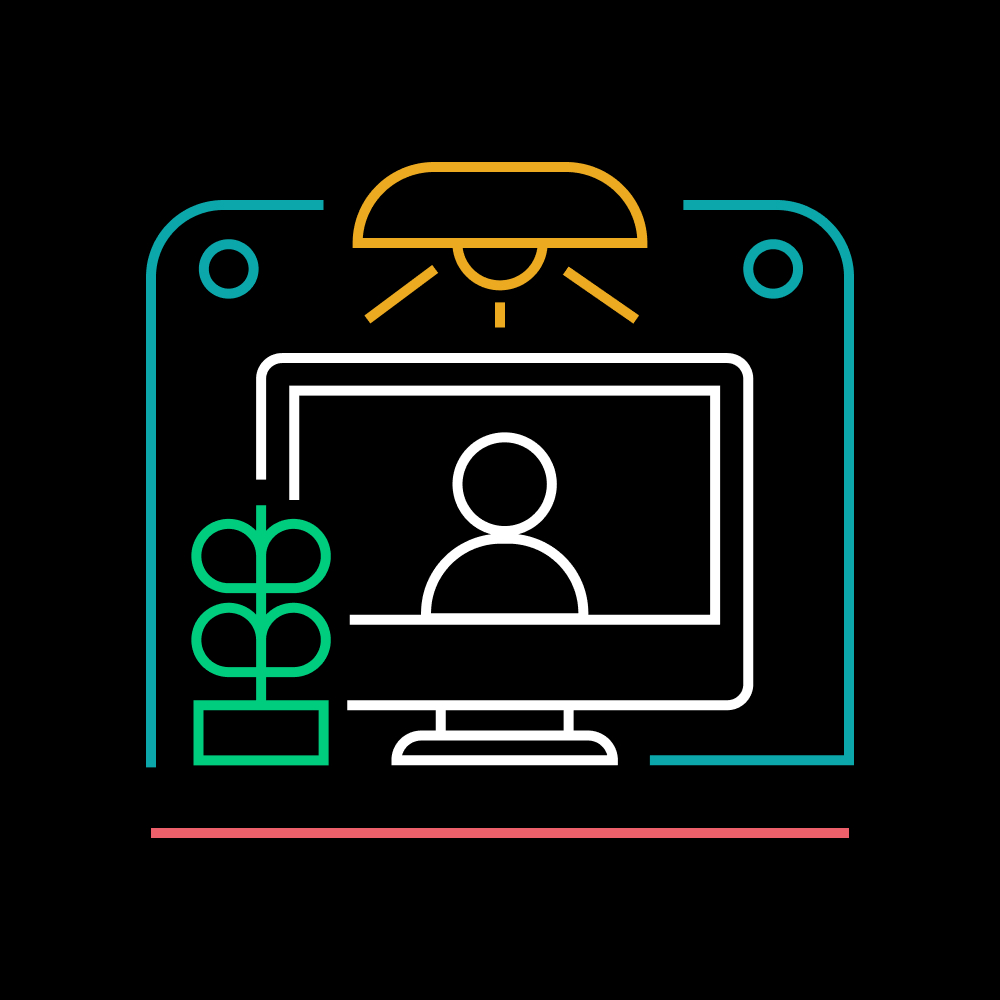
Bursts of brilliance: how leaders can embrace flexibility and stay innovative
New Future Forum research about igniting creativity in a digital-first world
Posted April 6, 2021 by Brian Elliott
Summary
Over the past year, creativity has taken on new forms, and innovation has emerged from living rooms, through video screens, and over digital platforms. To better understand the impact that remote work has had on creativity, the Future Forum surveyed 760 U.S.-based knowledge workers.
Here are three takeaways from the research:
Read a more detailed analysis from the research below.
Creativity, unlocked
When we think of creative environments, images of hip Brooklyn design studios, smoke-filled “Mad Men”-era ad agencies, or conference rooms plastered in fluorescent Post-its often come to mind. Creativity is often lauded as a “group sport,” a way to bring forward amazing ideas from a brilliant collective.
But turns out, that mythology was never true. For decades, academics have pointed out that brainstorming almost always amounts to groupthink. The conference room with the whiteboard all too often is a place where the loudest voices dominate and creative ideas go to die. It also discounts individual creativity. Are we giving people the time and support they need to do their best creative work, or just filling their days with meetings?
Over the past year of remote work, creativity—the production of novel and useful ideas—has been forced to take on new forms. Innovative thinking emerges from people’s living rooms, through video screens or even with digital sticky notes.
To better understand the impact that remote work has had on creative environments, the Future Forum surveyed 760 U.S.-based knowledge workers. What we found is counter to a lot of “intuition” out there. Turns out, individual creativity has actually improved with remote work, along with productivity. And team creativity doesn’t depend on physical spaces and whiteboards, but rather your team’s ability to take risks and its comfort with asking for help, sometimes referred to as psychological safety.
But there were also wide variations in creative experiences among individuals, teams and companies. At a time when CEOs are citing “improving innovation” as a top strategy for 2021, what does this mean for leaders as they design their workplaces?
Here’s a look at how this new data smashes four preconceived notions about fostering creativity.
Myth 1: It’s more difficult to be creative in the workplace when working solo.
Reality: Working remotely has a positive impact on individual creativity.
Individual creativity is the ability to unlock new ideas through focused, solo work. We often associate this type of work with writers, musicians or artists, but we don’t always equate individual focused work as the key to creativity in knowledge work: marketing campaigns, sales pitch decks, product designs, code development.
Existing research shows that groups come up with better solutions to problems when they interweave group working time with individual solo time. Our data shows that the space created by remote work has actually created a better foundation for individual creativity.
The majority (75%) of knowledge workers surveyed believe that their ability to come up with new ideas and solutions at work individually is “the same or better” while working remotely as it was in the office. In fact, only 5% report that remote work has significantly hampered their creativity.
Individual creativity depends on support from colleagues and managers, including willingness to take risks. In our survey, employees are:
- 38% more likely to feel creative when working remotely
- 48% more likely to say working from home makes them feel more comfortable asking colleagues for help
Creativity isn’t only fueled by time together as a team. Investing in time focused on the individual—uninterrupted hours of time to get into “flow”—is vital to unlocking your employees’ creative potential.
To foster this comfort, leaders need to create an environment that enables focus time. In addition to setting direction for focus time on a daily basis, it’s on leaders to place limits on days full of meetings, and normalize turning off notifications during focus time.
Myth 2: Creativity comes at the expense of productivity.
Reality: Environments that foster creativity also increase productivity.
Productivity can be defined as the ability to cut through the noise of the day-to-day to drive outcomes or achieve results. Unfortunately, people often equate activity with productivity—for example, speed of response. This emphasis on speed leaves less tangible activities, like leaving time for creativity, on the sidelines.
But fostering creativity leads to increases in productivity when teams generate new ideas or campaigns. Our research also shows that there is a direct relationship between perceived productivity and creativity:
- Nearly three-quarters (72%) of those who say remote work has increased their creativity also say that remote work hasn’t hurt their team’s ability to execute
- About 4 in 5 (79%) of those who say remote work has increased their creativity also say that remote work has boosted their productivity
Leaders also need to be careful not to focus only on ideas that are clear successes. As Kellogg School of Management professor Brian Uzzi reminds us: “Creativity is extremely expensive and you need to have systems in place so that you can fail often.”
As leaders allocate more attention to focused time, they should also invest in changing the norms of “productive work.” Productivity should not be measured by speed in response to emails or Slack messages. Rather, concentrate on the core goal for projects, and prioritize achievement of outcomes over the level of activity.
Myth 3: It’s all preordained. Some companies are simply better suited to remote work.
Reality: Companies that are experimenting with new ways of collaborating, supported by investments in technology, are more innovative.
Encouragingly, many companies have accepted the fact that the absence of conference rooms and whiteboards is an opportunity, not an obstacle. They understand that success depends on much more than a virtual whiteboard—it depends on fundamentally reimagining how their teams collaborate.
Seventy percent of knowledge workers say that their employer has introduced new tools and processes to facilitate collaboration since working remotely. And these workers are:
- Twice as likely to say that their team’s creativity and innovation has kept pace or improved while working remotely (62% vs. 31% of those working at companies that have not instituted changes)
- 50% likelier to say that remote work is better for coming up with new solutions or ideas in their work than they are to say it’s worse (39% vs. 26%)
In discussions with numerous companies and teams, we’ve found a consistent bright spot: The shift to more asynchronous “brainwriting” over brainstorming has leveled the playing field for people who often felt like outsiders. Employees who tend to be less vocal or introverted have a new opportunity for their thoughts to be heard. Those who need time to digest and think about solutions can bring new ideas forward on their own terms.
Investments in new technologies both bridge the gap between remote and office-based teams and unlock better, more abundant innovation by enabling teams to brainstorm better and collaborate together asynchronously.
Myth 4: We just need to get people back in rooms together to foster creativity.
Reality: The success of group creativity and complex problem-solving depends on bringing diverse perspectives to the forefront, not into a physical space.
Most of the biggest challenges and opportunities that companies face require creative solutions that cut across disciplines, areas of expertise and people with a variety of perspectives. Connecting ideas across disciplines is critical for creative breakthroughs. As distinguished Harvard Law School fellow Heidi Gardner put it, “Innovation is creativity applied. That’s why we need people who are complex thinkers and people who are concrete thinkers.” But bringing together diverse perspectives requires more than just pulling people back in rooms to brainstorm.
In fact, our research shows that where your colleagues work has no bearing on team creativity. People are just as likely to feel that their team is creative if their teammates are working remotely full-time (53% agree that their teams are as or more creative), working a hybrid model (54% agree), or in the office full-time (53% agree).
What does impact team creativity? Your team’s willingness to take risks and people’s comfort level with asking for help, also known as psychological safety.
- Of people who have seen improvement in their team’s willingness to take risks, 62% say that their team is as or more creative than when they were in the office, compared with 35% of people who believe that their risk-taking is worse.
- Of people who are more comfortable asking their colleagues for help, 57% say that their team is as or more creative than when they were in the office, compared with 37% of people who say they are not comfortable asking for help.
How do you start building trust? Transparency and seeing each other as people are foundations, but small wins are critical. As author and Tepper School of Business professor Anita Woolley states, “There’s a threshold of trust that you need. But there can be too much focus on team building alone. Is it really trust that leads to good performance, or the other way around? People need to see the goal, and that they’re making progress to the goal.” Momentum building and transparency are instrumental to building trust in teams.
There are, however, looming challenges. For many, the shift to remote has diminished the size of work-based networks. People surveyed are almost twice as likely to say that they feel less connected to other teams and people outside of their immediate working team (55% vs. 24% who feel more connected), and more likely to say that working from home is worse for their team’s ability to learn from one another (42% vs. 24% who say it’s better). But, as Joseph White, the Director of Workplace Futures and Insight at furniture company Herman Miller, notes, “It’s not forced collisions between people that generate ideas; it’s the intentional act of building strong relationships over time.” In the post-pandemic workplace, the office should be used to cultivate these relationships, not just revert to past norms of work.
Network expansion is an investment. As Gardner puts it, “You need to build the network well before you need it. The ROI will come down the road.” Companies need to invest in building bonds across teams and trust within teams, leveraging tools and techniques that bring different people together with intention, both digitally and in shared space. When you think about how to use shared space, don’t rely on whiteboards in conference rooms, water coolers or serendipity—create opportunities for cross-fertilization through more dedicated time together for new teams, initiatives and cross-functional team building.
An opportunity to move forward, not backward
While the shift to remote work was sudden and jarring for many, our experience is a vivid illustration that people will always unlock their creative forces if given the proper conditions and support. The past year has opened up the eyes of many to new and better ways to foster creativity and innovation from anywhere, and to unlock the potential of bringing diverse groups of people from a wider range of backgrounds to the table.
If you want to build an engine of innovation, don’t bring everyone back into the office and hope for serendipity when we know there are better ways forward:
- Break the reliance on days full of meetings and allow individuals to get uninterrupted focus time for individual creativity
- Focus on building trust and safety among diverse teams so that people are willing to share ideas, take risks and ask for help
- Use physical time together to build relationships and networks among and across teams; invest in technology that allows asynchronous “brainwriting” and not just live “brainstorming”
Leaders have a massive opportunity to embrace new ways of fostering innovation. Done right, the new age of flexible work can be a Golden Age of creativity.
Methodology: Survey of 760 U.S.-based knowledge workers—defined as working with data or analyzing information, or with software or hardware that requires specialized training—conducted by Qualtrics between March 9 and March 18, 2021. Of those surveyed, 350 are currently working remotely full-time, 181 are working remotely most of the time, and 229 are working in the office most of the time.


